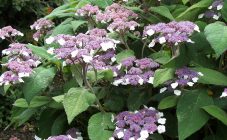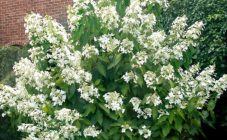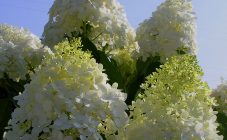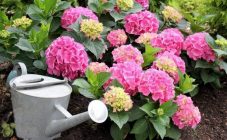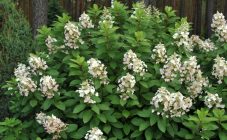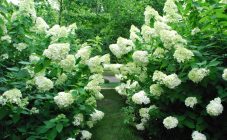Content:
Plants that are often used to decorate home gardens include the Pink Diamond hydrangea. It is a variety with spectacular and large inflorescences. Due to their shape, the plant belongs to the paniculate type.
It is a perennial plant that can live for several decades. During this time, it reaches a large size and takes on the appearance of a shrub.
This type of hydrangea is characterized by a long flowering period and unpretentiousness. It is not difficult to care for this flower, which is why many summer residents and gardeners choose it. You can verify the benefits of this plant by studying its characteristics.
Description of the variety

Hydrangea Pink Diamond
Hydrangea paniculata Pink Diamond is one of the long-known varieties. For several centuries it has been used for decorative purposes. It is distinguished by its attractive appearance and neatness. All this despite its size - it can reach 3 meters in height.
Shoots of Pink Diamond hydrangea are characterized by resistance. They hardly break under the wind. In case of mechanical damage, they are easily restored. This shrub is resistant to low temperatures and does not die during severe frosts. The life span of a plant can reach 30 years. As the branches of the hydrangea grow, they gain more strength.
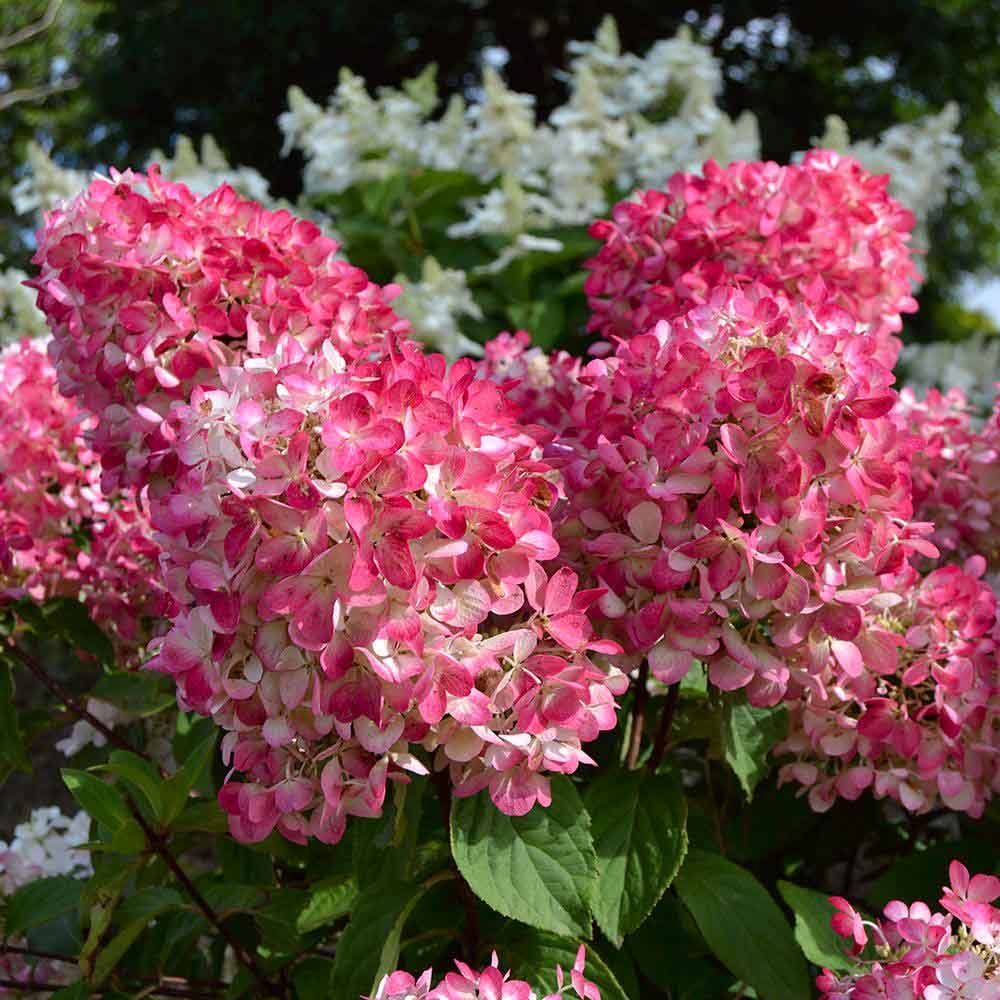
Pink Diamond Hydrangea Shoots
The leaves of the Pink Diamond hydrangea are elliptical. They are rough to the touch and have a matte green color.
The shrub is characterized by a neat appearance even in the absence of the necessary maintenance and pruning, since it branches little. But caring summer residents are able to give it any shape.
Hydrangea inflorescences have the appearance of a large cone 15-30 cm in size. They bloom in early July and remain until mid-September. The plant is interesting because its flowers can change color. In summer, the buds are white, but gradually acquire a rich color and by autumn they become dark pink or lilac. The plant blooms very profusely, due to which the bush is covered with clusters of small flowers.
Features of planting hydrangeas
It is important to know not only the description of Pink Diamond hydrangea, but also the features of its planting, since the life of the plant and its attractiveness depend on them.
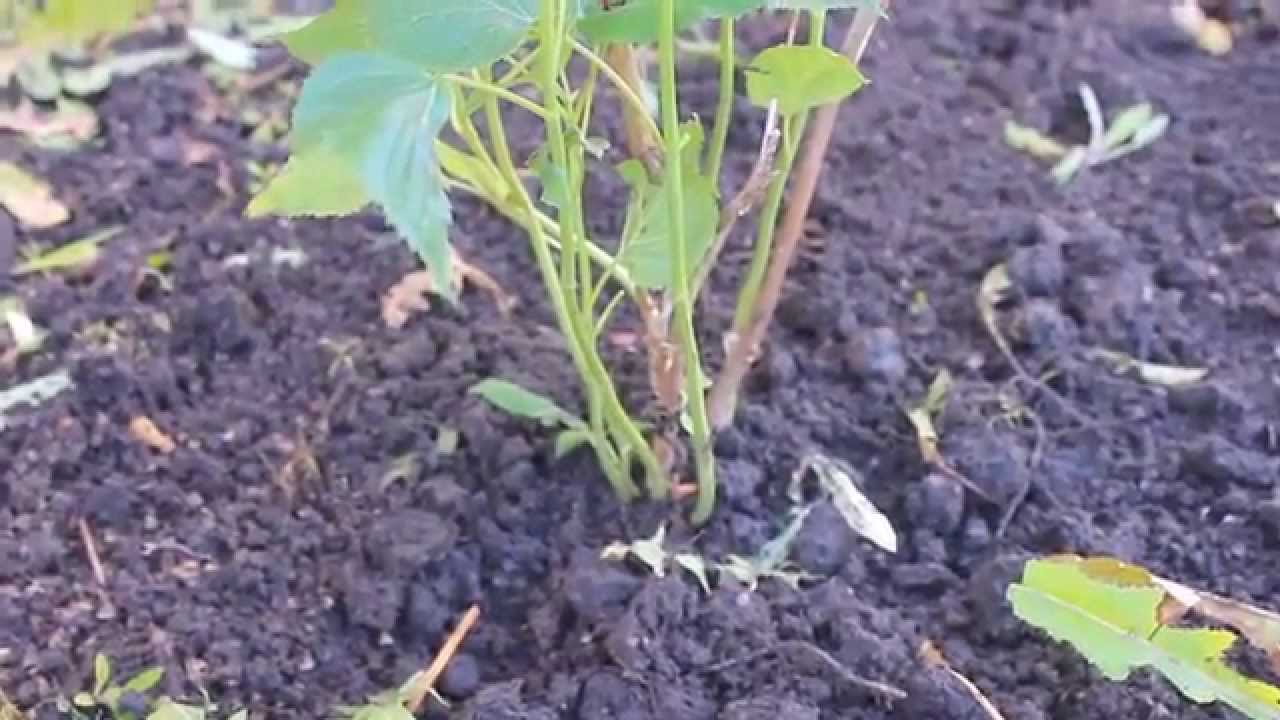
Features of planting hydrangeas
Before planting a plant, you need to find a suitable place:
- The crop grows to a height of 2 m. Therefore, enough space is needed for the hydrangea to grow in height and width.
- This type of hydrangea is shade-loving. For disembarkation, it is necessary to select dimly lit areas.
- The preferred type of soil is moderately acidic.
This shrub is easily adaptable to different conditions, so the requirements listed above are not strict. Hydrangea Pink diamond can grow in the shade and on insufficiently fertile soil. But she needs high humidity, so you need to ensure frequent watering.
The culture is planted in two ways: cuttings and seeds.
When using seeds, make sure they are of good quality.It is advisable to choose those that are delivered from Japan or China, since there are the most natural conditions for the growth of hydrangeas. The seeds should be dark brown, small in size and oblong in shape. Units that are stained or damaged are not suitable for disembarkation. Each hydrangea seed should be clean and firm.
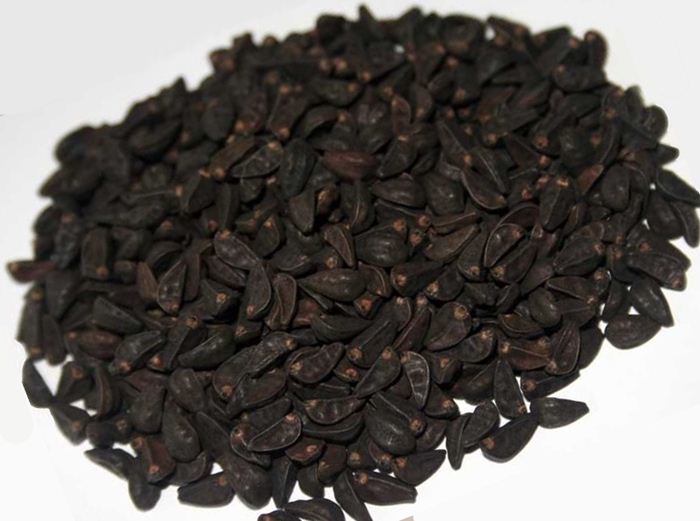
Hydrangea seeds
It is worth planting a plant in the fall. Hydrangea seeds must be placed in a special substrate consisting of 3 components: leaf and turf soil, plus sand. The proportions of the components are 4: 2: 1. The prepared substrate is placed in bags and transplanted.
This culture needs frequent moisture to grow. The optimum soil temperature is up to 20 degrees. The first shoots of hydrangea should appear in about a month and a half. When 2-3 leaves are formed on them, you can transplant the seedlings into separate pots, the diameter of which should be at least 7 cm.
In the summertime, it is allowed to find seedlings in the fresh air. You need to protect them from drafts, rain and direct sunlight. Hydrangea can be transplanted into open ground after 3 years.
Hydrangea cuttings are planted in early spring, summer and autumn. They need to be located at a distance from each other (about 1 m). When preparing the pits, you should make them large in size. They must exceed the root system several times. At the bottom of each is placed a fertile mixture purchased from the store. The roots of the plant must be completely covered with soil. Lightly compact the earth and water. It is also necessary to mulch with sawdust or plant residues.
Care features
Hydrangea Pink Diamond does not need special care, but it is better to take into account a number of requirements, otherwise the plant will grow slowly, and its flowers will become small and faded.
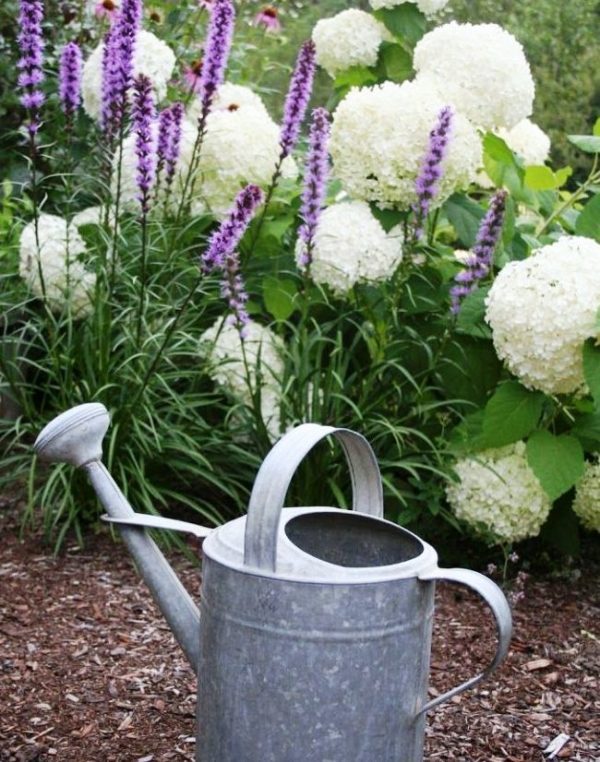
Watering hydrangea
This crop needs frequent watering, especially during the growing season. At this time, the moisture consumption of the root system increases and there is a risk of drying out. Therefore, the soil must be moist. It is best to water the plant with a solution of potassium permanganate - this will provide not only moisture, but also a beautiful flowering of the culture.
Top dressing is carried out with fertilizers and mineral additives. Hydrangea needs them in the spring, with active sap flow. The most commonly used chalk and peat. Dry or fresh manure can be used. Also, this plant responds well to the addition of food products to the soil, for example, whey or kefir. The use of lemon juice diluted with water helps from the yellowness of the flowers. Spraying shrubs with iron sulfate helps to prevent the leaves from drying out.
If the soil is rich enough in minerals, you can not be zealous with feeding.
Hydrangea pruning is carried out to give a beautiful appearance. During such work, weak and damaged branches are removed. It is recommended to shorten strong stems, leaving up to 5 buds on them. This must be done in the fall.

Pruning hydrangea
This culture is frost-resistant, but it is worth hiding for the winter, especially in the first year. The ground around the bush is covered with burlap or film, and the stems are bent and also covered. A layer of peat is laid on top, over which pieces of slate are placed. In this form, the plant copes with temperatures up to 30 degrees below zero. Frozen shoots almost always return to their normal state, so in warm and temperate climates it is not necessary to hide them for the winter.
For mulching hydrangeas, sawdust and needles are used.
Diseases and pests
The Pink Diamond panicle hydrangea is an unpretentious plant that easily adapts to adverse conditions. But he also has some types of diseases.
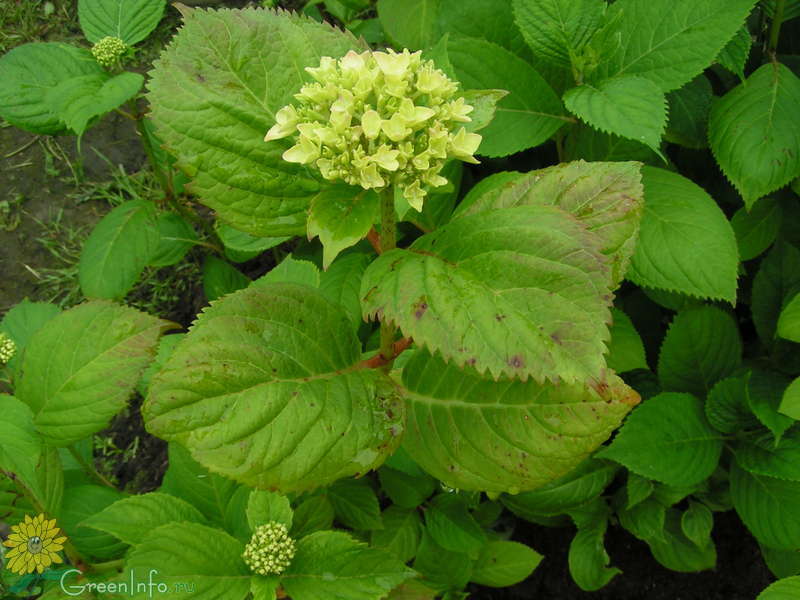
Hydrangea diseases
Common problems with growing this crop are powdery mildew and garden aphids. Because of them, the hydrangea can die or lose its strength and attractiveness. To avoid this, the bushes are treated in advance with the help of Avixil, Vitaxid, Oksikhom preparations. They help to avoid diseases and destroy pests.
You can also use folk remedies. The most popular is the use of a solution of laundry soap and garlic. Soap (250 g) is diluted in water (2 l) and 50 g of garlic are added there. Shrubs should be sprayed with this mixture 2-3 times a week shortly before flowering. Such a remedy is very effective against harmful insects.
Use in garden decoration
The main advantages of hydrangea are its hardiness and ease of care. Therefore, the plant is so often used to decorate garden and backyard plots. Another important feature is its beauty and duration of flowering, during which the color of the inflorescences changes from white to red.
Hydrangea bushes can be planted in the center of flower beds with smaller plants. But it must be remembered that this culture actively consumes moisture, because of which its neighbors can dry out. Therefore, the neighbors must be selected from a number of drought tolerant plants. Hydrangea Pink Diamond goes well with small conifers. By planting them side by side, you can create a wonderful contrast that makes the garden alley unique. Hydrangeas also look good along with cereals, verbena and clematis.
When using this shrub to decorate a garden or summer cottage, it must be borne in mind that it does not combine with plants of orange, yellow and red colors. Therefore, they should be located in different zones.
Pink Diamond hydrangea looks good on its own - surrounded by fruit trees. The shrub can be given its original shape by pruning - this will be an interesting element of landscape design.
